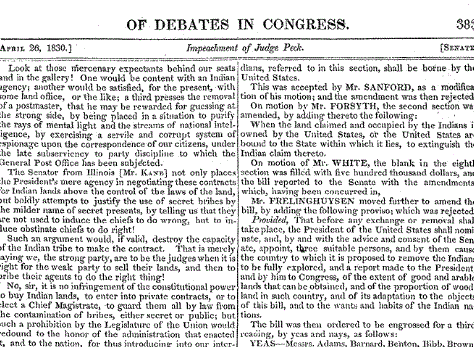Indian Removal Era Begins 1828-1849
1830
U.S. policy of genocide authorized with signing of Indian Removal Act

On May 28, Andrew Jackson signs the law authorizing the President to “negotiate” with southern tribes for their removal to federal territory west of the Mississippi River in exchange for their land. The Act and its implementation are genocidal in intent and action. The Act authorizes the U.S. military to force Cherokee, Chickasaw, Choctaw, Muscogee Creek, and Seminole tribes, including some of Jackson’s former allies in the War of 1812, out of southeastern states east of the Mississippi. This sets the stage for the Trail of Tears and other forced relocation marches. In his 1833 address to Congress, Jackson states: “[That tribes] can not exist surrounded by our settlements and in continual contact with our citizens is certain. They have neither the intelligence, the industry, the moral habits, nor the desire of improvement which are essential to any favorable change in their condition. Established in the midst of another and a superior race, and without appreciating the causes of their inferiority or seeking to control them, they must necessarily yield to the force of circumstances and ere long disappear.”